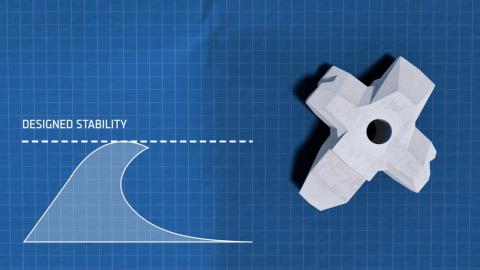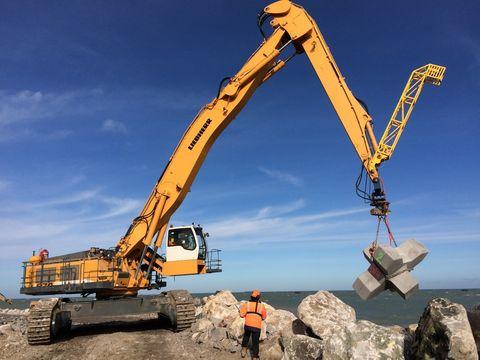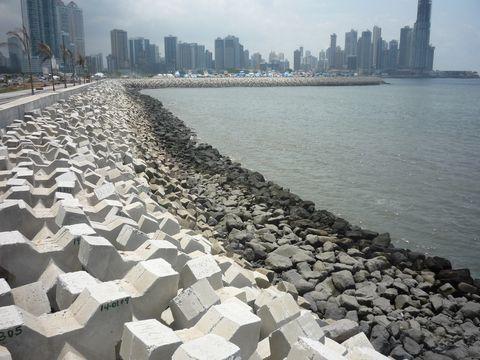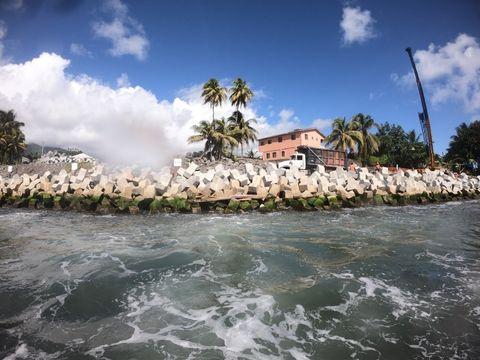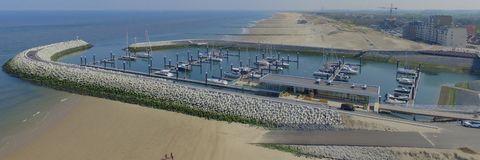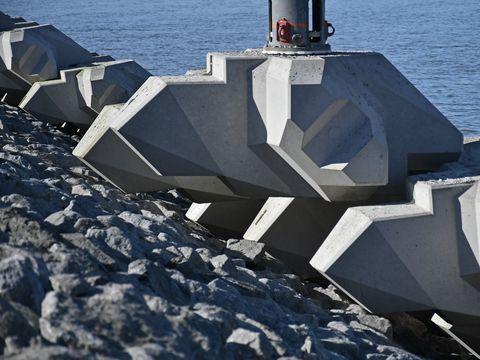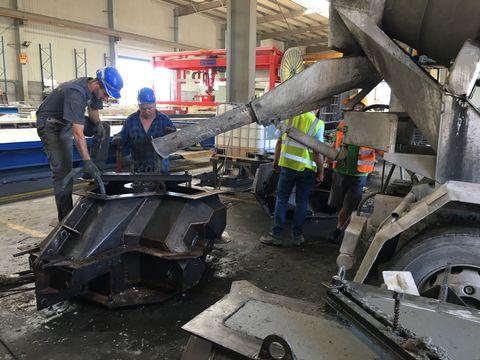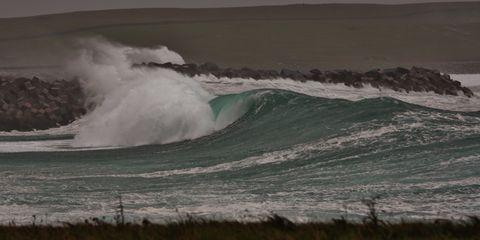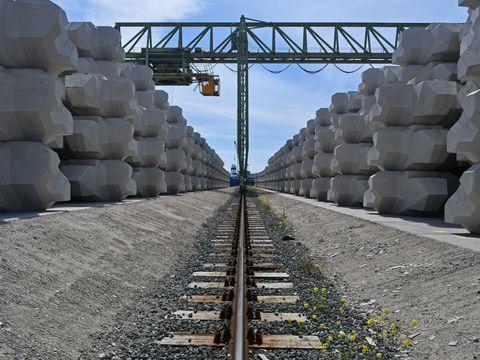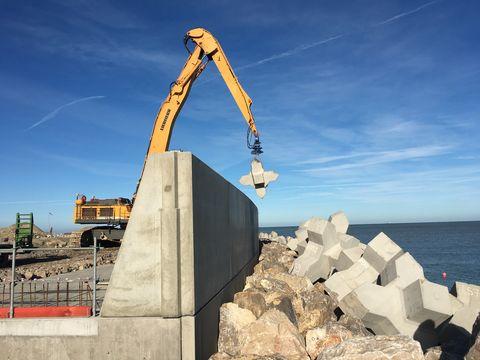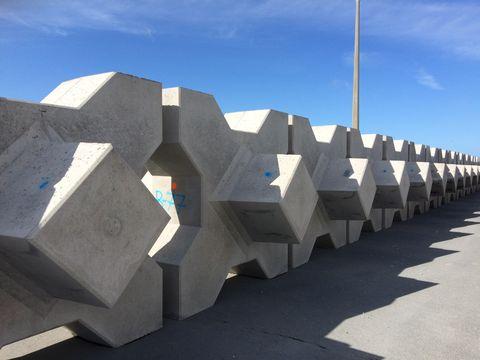












Why Xbloc?
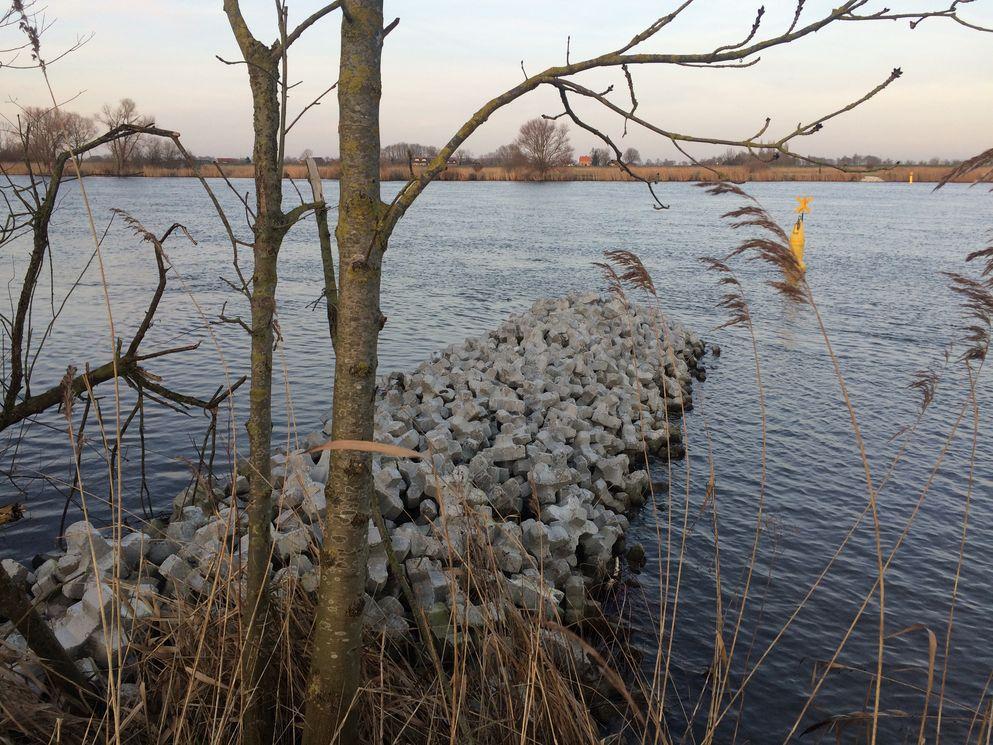
Sustainability & Nature Value, Xstream blocks in River IJssel, The Netherlands
Resilience to climate change
There are significant uncertainties in future wave conditions due to the climate change.
These uncertainties result from sea level rise, changing hurricane tracks and increasing storm intensity. Therefore, new shore protection structures and breakwaters need to be designed with resilience to higher design waves. This can be achieved by designing them with a higher safety coefficient - more conservatively, but that generally leads to increased cost, material use and CO2 emission.
XblocPlus has a built-in resilience against higher waves which is unmatched by any other armouring solution. Research shows that the XblocPlus unit provides protection without damage for waves up to 200% of the design wave height. At the same time cost, material use and CO2 emission of the XblocPlus layer are lower than for other armouring solutions in the market. As a result, an XblocPlus structure is a cheaper option offering better protection against future wave conditions.
The high resilience factor of XblocPlus also reduces maintenance needs of a project. Case studies of shore protection projects in Western Europe show that structures utilizing rock armour would need 1 up to 3 repair operations in their 50-year lifetime, whereas an XblocPlus structure would be maintenance-free for the current and future wave climate.
Sustainability & creating nature value
We strive to combine the maximum protection against wave with a minimum carbon footprint for all of our blocks.
This is in the first place achieved by the unique design: the block shape and how the blocks work together. Xbloc and XblocPlus allow for a thin armour layer charactarized by a high porosity. They can be applied at a steep slope reducing the need for rock material. This in turn leads to reduction in material quantities and CO2 emission. CO2 reductions for Xbloc and XblocPlus projects compared to other armour solutions depend on project conditions and the distance from the material sources to the project site, but a reduction of up to 50% can be achieved.
Secondly, we continuously research and test innovative materials in the strive to further reduce the carbon footprint of the material itself. This is an ongoing research project in which we closely cooperate with our partners.
Hard structures not only provide protection against waves and currents. They also provide opportunities to stimulate nature development. This can be illustrated by numerous artificial reefs realized around the world. Ports worldwide take measures to stimulate marine life by adding various components to the infrastructure. Instead of adding special blocks to marine structures, we create built-in nature value in the Xbloc, XblocPlus and Xstream structures themselves. For this purpose we cooperate with partners to enhance the material properties and the texture of the block surfaces to offer the aquatic life an attractive habitat.
Economic value
The Xbloc breakwater products guarantee a significant cost reduction. In case of both Xbloc and XblocPlus, the quantity of rock and concrete needed is reduced. With the application of highly interlocking XblocPlus the costs can be further diminished as the number of units required to cover a breakwater is reduced by 25-50% compared to other systems. This also contributes to a significantly reduced construction time.
The Xstream blocks allow for a cost reduction because the protection structure can be built at a much steeper slope, limiting material volume. Furthermore, multiple thin rock layers requiring accurate application are replaced by one body of Xstream units which can be put down in bulk. All these aspects significantly reduce transport and construction costs. See for more information about Xstream.
Aesthetics
XblocPlus gives breakwaters and shore protection a modern architectural appearance. This aspect was particularly important for the Afsluitdijk Project where the Client highly valued the aesthetic impact of the reinforcement of the dam on the surrounding landscape. It was not desirable to cover the structure with a layer of Xblocs as this would have changed the appearance of the iconic structure from a dike to a breakwater.
In order to provide the required stability, DMC combined the aesthetic appearance of pattern-placed revetment blocks with the advantages of interlocking breakwater blocks. This is how the remarkable XblocPlus shape was born.

